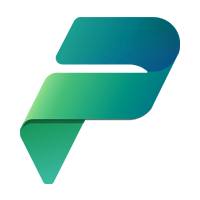What’s Included?
Prerequisites
- Basic knowledge of Microsoft Power Platform and Microsoft 365 environment
- Understanding of cloud services and security fundamentals
Skills You’ll Gain
- Environment Configuration
- DLP Policy Management
- Role Assignment
- Usage Monitoring
- Security Compliance
Self Study Materials Included
Videos
Engaging visual content to enhance understanding and learning experience.
Podcasts
Insightful audio sessions featuring expert discussions and real-world cases.
Audiobooks
Listen and learn anytime with convenient audio-based knowledge sharing.
E-Books
Comprehensive digital guides offering in-depth knowledge and learning support.
Module Wise Quizzes
Interactive assessments to reinforce learning and test conceptual clarity.
Additional Resources
Supplementary references and list of tools to deepen knowledge and practical application.
Tools You’ll Master

Power Apps

Power Automate

Power Platform
What You’ll Learn
Create and Configure Power Platform Environments
Set up environments for development, testing, and production.
Implement Data Loss Prevention Policy Controls
Protect sensitive data with custom DLP policy rules.
Assign and Manage Roles and Permissions
Control user access with role-based security settings.
Monitor Platform Usage and Resource Consumption
Track usage metrics and optimize resource allocation effectively.
Course Modules
Lesson 1: Power Platform Robotic Process Automation overview
Module 1.1: Introduction to Microsoft Power Platform developer resources
Module 1.2: Manage solutions in Power Apps and Power Automate
Module 1.3: Introduction to Power Automate process mining
Module 1.4: Optimize your business process with process advisor
Module 1.5: Describe building automation with Microsoft Power Automate
Lesson 2: Build and optimize cloud flows in Power Automate
Module 2.1: Get started with Power Automate
Module 2.2: Introduction to expressions in Power Automate
Module 2.3: Best practices for error handling in Power Automate flows
Module 2.4: Overview of HTTP connectors in Power Automate
Module 2.5: Troubleshoot slow-running flows in Power Automate
Lesson 3: Desktop flows and Robotic Process Automation in Power Automate
Module 3.1: Build your first Power Automate for desktop flow
Module 3.2: Configure flow control in Power Automate for desktop
Module 3.3: Adjust process behavior using conditional actions with Power Automate for desktop
Module 3.4: Handle variables in Power Automate for desktop
Module 3.5: Define input and output parameters in Power Automate
Module 3.6: Automate repetitive tasks using loops in Power Automate
Module 3.7: Generate Power Automate for desktop flows by recording
Module 3.8: Scripting in Power Automate for desktop
Module 3.9: Web automation in Power Automate for desktop
Module 3.10: Configure exception and error handling in Power Automate for desktop
Lesson 4: Connect and share cloud flow to desktop flows in Power Automate for desktop
Module 4.1: Connect a cloud flow to desktop flows in Power Automate for desktop
Module 4.2: Share a cloud flow with Power Automate
Lesson 5: Get started with custom connectors for Microsoft Power Platform
Module 5.1: Get started with custom connectors in Microsoft Power Platform
Module 5.2: Discover and use Web APIs with Power Apps
Module 5.3: Configure custom connectors with authenticated APIs in Microsoft Power Platform
Module 5.4: Configure policy templates for custom connectors in Microsoft Power Platform
Module 5.5: Create Microsoft Power Platform OpenAPI custom connectors
Frequently Asked Questions
This course is designed for Power Platform administrators responsible for managing environments, security, and governance.
Familiarity with Microsoft Power Platform basics and cloud service concepts is recommended.
Yes, it includes implementing data loss prevention policies and managing environment security.
Yes, monitoring resource consumption and usage analytics are part of the curriculum.
Yes, assigning and managing user roles and permissions is an essential part of the course.